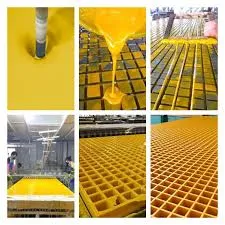
-
 Afrikaans
Afrikaans -
 Albanian
Albanian -
 Amharic
Amharic -
 Arabic
Arabic -
 Armenian
Armenian -
 Azerbaijani
Azerbaijani -
 Basque
Basque -
 Belarusian
Belarusian -
 Bengali
Bengali -
 Bosnian
Bosnian -
 Bulgarian
Bulgarian -
 Catalan
Catalan -
 Cebuano
Cebuano -
 China
China -
 China (Taiwan)
China (Taiwan) -
 Corsican
Corsican -
 Croatian
Croatian -
 Czech
Czech -
 Danish
Danish -
 Dutch
Dutch -
 English
English -
 Esperanto
Esperanto -
 Estonian
Estonian -
 Finnish
Finnish -
 French
French -
 Frisian
Frisian -
 Galician
Galician -
 Georgian
Georgian -
 German
German -
 Greek
Greek -
 Gujarati
Gujarati -
 Haitian Creole
Haitian Creole -
 hausa
hausa -
 hawaiian
hawaiian -
 Hebrew
Hebrew -
 Hindi
Hindi -
 Miao
Miao -
 Hungarian
Hungarian -
 Icelandic
Icelandic -
 igbo
igbo -
 Indonesian
Indonesian -
 irish
irish -
 Italian
Italian -
 Japanese
Japanese -
 Javanese
Javanese -
 Kannada
Kannada -
 kazakh
kazakh -
 Khmer
Khmer -
 Rwandese
Rwandese -
 Korean
Korean -
 Kurdish
Kurdish -
 Kyrgyz
Kyrgyz -
 Lao
Lao -
 Latin
Latin -
 Latvian
Latvian -
 Lithuanian
Lithuanian -
 Luxembourgish
Luxembourgish -
 Macedonian
Macedonian -
 Malgashi
Malgashi -
 Malay
Malay -
 Malayalam
Malayalam -
 Maltese
Maltese -
 Maori
Maori -
 Marathi
Marathi -
 Mongolian
Mongolian -
 Myanmar
Myanmar -
 Nepali
Nepali -
 Norwegian
Norwegian -
 Norwegian
Norwegian -
 Occitan
Occitan -
 Pashto
Pashto -
 Persian
Persian -
 Polish
Polish -
 Portuguese
Portuguese -
 Punjabi
Punjabi -
 Romanian
Romanian -
 Russian
Russian -
 Samoan
Samoan -
 Scottish Gaelic
Scottish Gaelic -
 Serbian
Serbian -
 Sesotho
Sesotho -
 Shona
Shona -
 Sindhi
Sindhi -
 Sinhala
Sinhala -
 Slovak
Slovak -
 Slovenian
Slovenian -
 Somali
Somali -
 Spanish
Spanish -
 Sundanese
Sundanese -
 Swahili
Swahili -
 Swedish
Swedish -
 Tagalog
Tagalog -
 Tajik
Tajik -
 Tamil
Tamil -
 Tatar
Tatar -
 Telugu
Telugu -
 Thai
Thai -
 Turkish
Turkish -
 Turkmen
Turkmen -
 Ukrainian
Ukrainian -
 Urdu
Urdu -
 Uighur
Uighur -
 Uzbek
Uzbek -
 Vietnamese
Vietnamese -
 Welsh
Welsh -
 Bantu
Bantu -
 Yiddish
Yiddish -
 Yoruba
Yoruba -
 Zulu
Zulu
frp step
Understanding the FRP Step A Guide to Fiber Reinforced Polymer Technology
Fiber Reinforced Polymer (FRP) technology has gained immense popularity in various engineering applications due to its excellent mechanical properties and versatility. For those unfamiliar with the term, FRP refers to composite materials made of a polymer matrix reinforced with fibers. This combination maximizes strength while minimizing weight, making FRP an ideal choice for industries such as construction, automotive, and aerospace.
One of the critical aspects of FRP technology is the process by which it is made. The FRP stepping process typically involves several key stages material selection, preparation, forming, curing, and finishing. Each step plays a crucial role in determining the overall performance of the final product.
.
2. Preparation Before the actual forming process, the materials must be prepared. This stage includes cutting the fibers to the desired length and mixing the resin with hardeners. Proper preparation ensures that the fibers are evenly coated with resin, allowing for optimal bonding and structural integrity in the final product.
frp step

3. Forming The forming process can vary based on the intended application. Common methods include hand lay-up, spray-up, filament winding, and pultrusion. Each technique has its advantages; for example, hand lay-up is suitable for complex geometries, while pultrusion is efficient for producing continuous profiles. The choice of method will depend on factors such as production volume, design complexity, and cost considerations.
4. Curing Once the FRP has been formed, it needs to cure, allowing the resin to harden and set. This can be achieved at ambient temperature or in heated environments, depending on the resin system being used. Proper curing is essential to achieving the desired mechanical properties and longevity of the composite material.
5. Finishing The final step in the FRP production process is finishing. This may involve sanding, painting, or applying protective coatings to improve aesthetics and resistance to environmental wear. Finishing touches not only enhance the appearance of the product but also increase its lifespan and performance.
In conclusion, understanding the FRP step process is crucial for anyone involved in the design or manufacturing of composite materials. With its many advantages, FRP remains a strong contender in a wide range of applications. As technology advances, we can expect even more innovative uses for FRP materials, further solidifying its role in modern engineering and construction. Whether you’re an industry professional or simply curious, grasping the intricacies of the FRP step can pave the way for future exploration and development in this fascinating field.
Latest news
-
Exploring the Benefits of Top Hammer Drifter Rods for Enhanced Drilling PerformanceNewsJun.10,2025
-
High-Precision Fiberglass Winding Machine for GRP/FRP Pipe Production – Reliable & Efficient SolutionsNewsJun.10,2025
-
FRP Pipes & Fittings for Shipbuilding - Corrosion-Resistant & LightweightNewsJun.09,2025
-
Premium FRP Flooring Solutions Durable & Slip-ResistantNewsJun.09,2025
-
Premium Fiberglass Rectangular Tanks Durable & Lightweight SolutionNewsJun.09,2025
-
Tapered Drill String Design Guide Durable Performance & UsesNewsJun.09,2025









